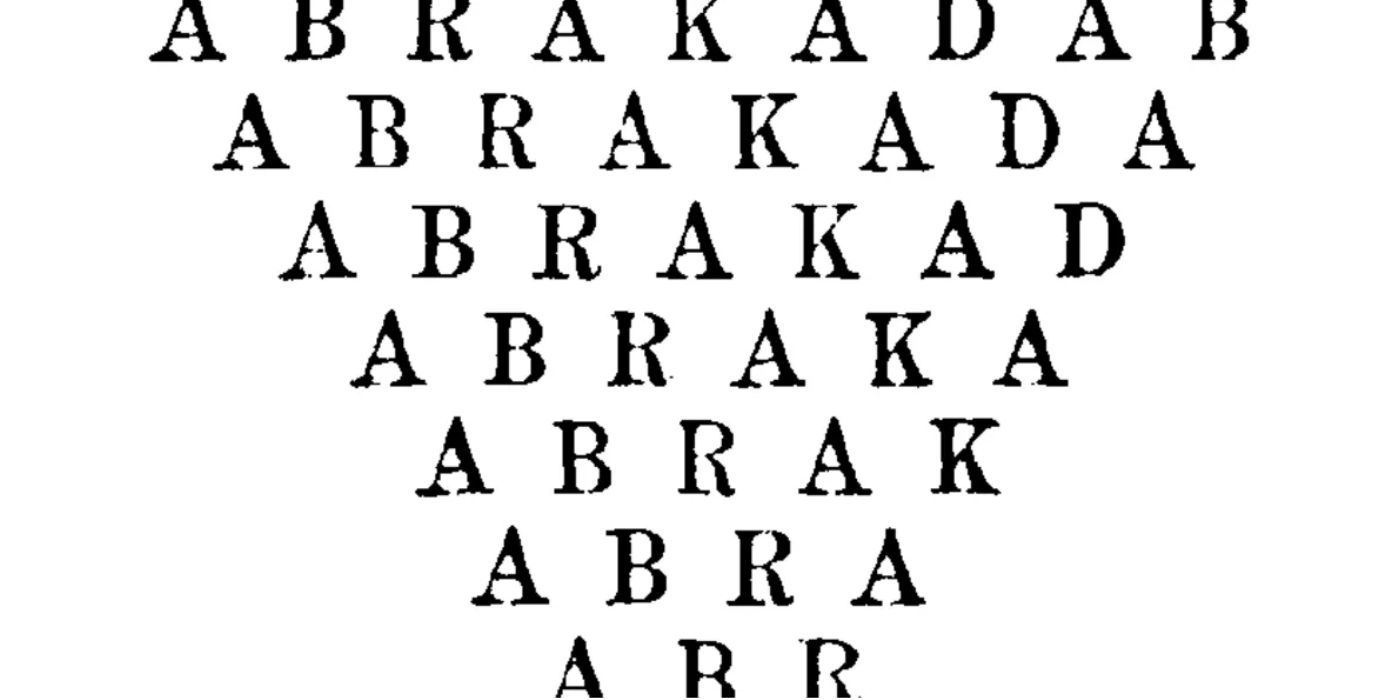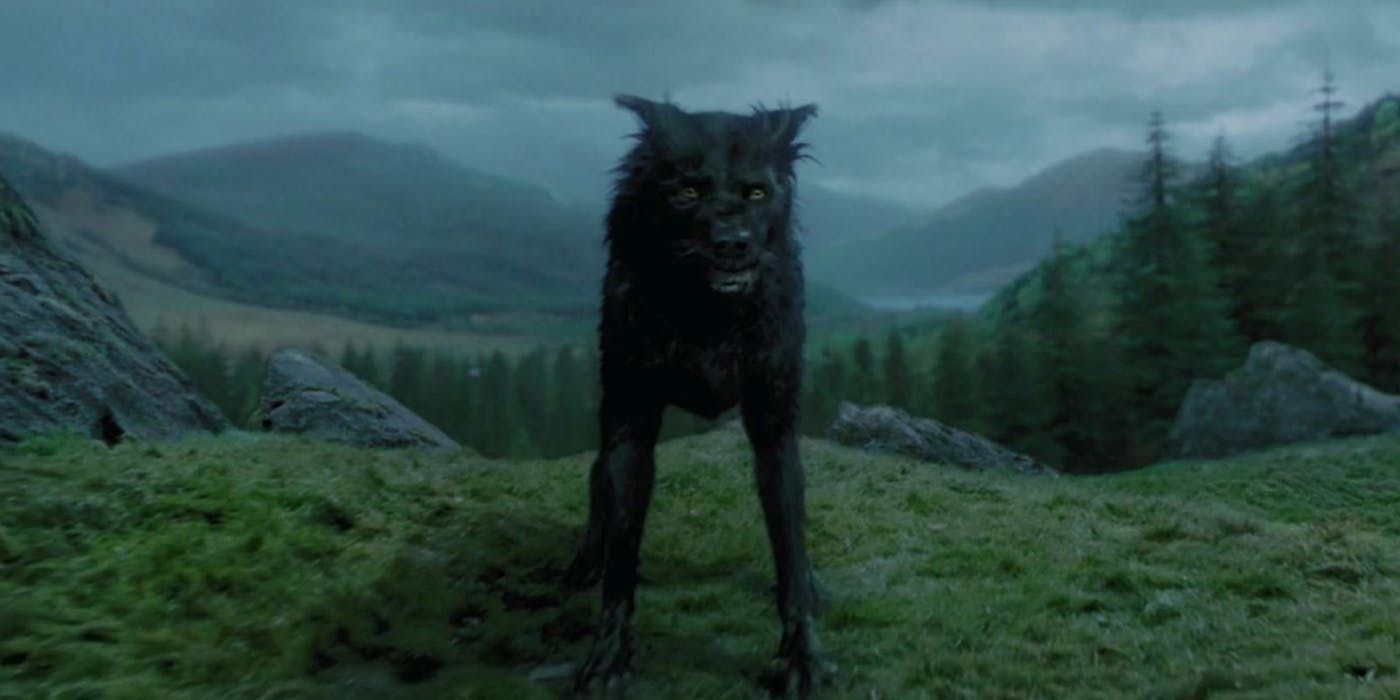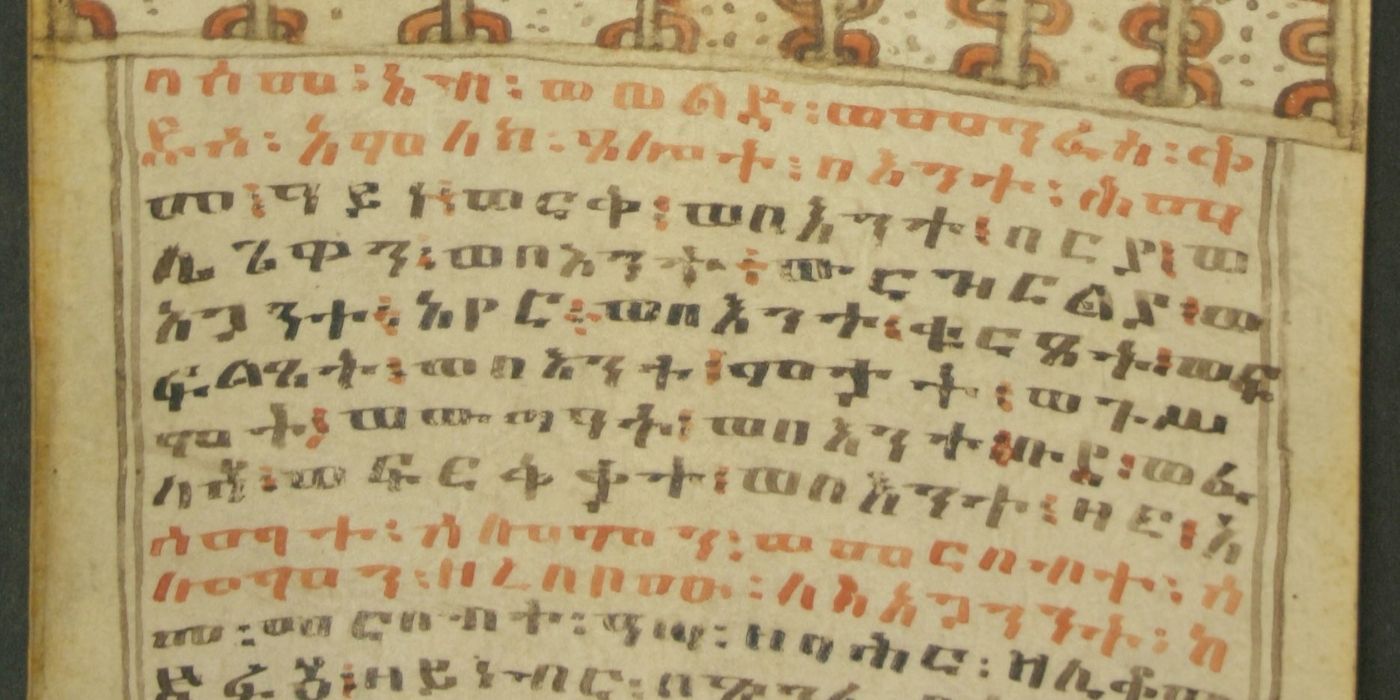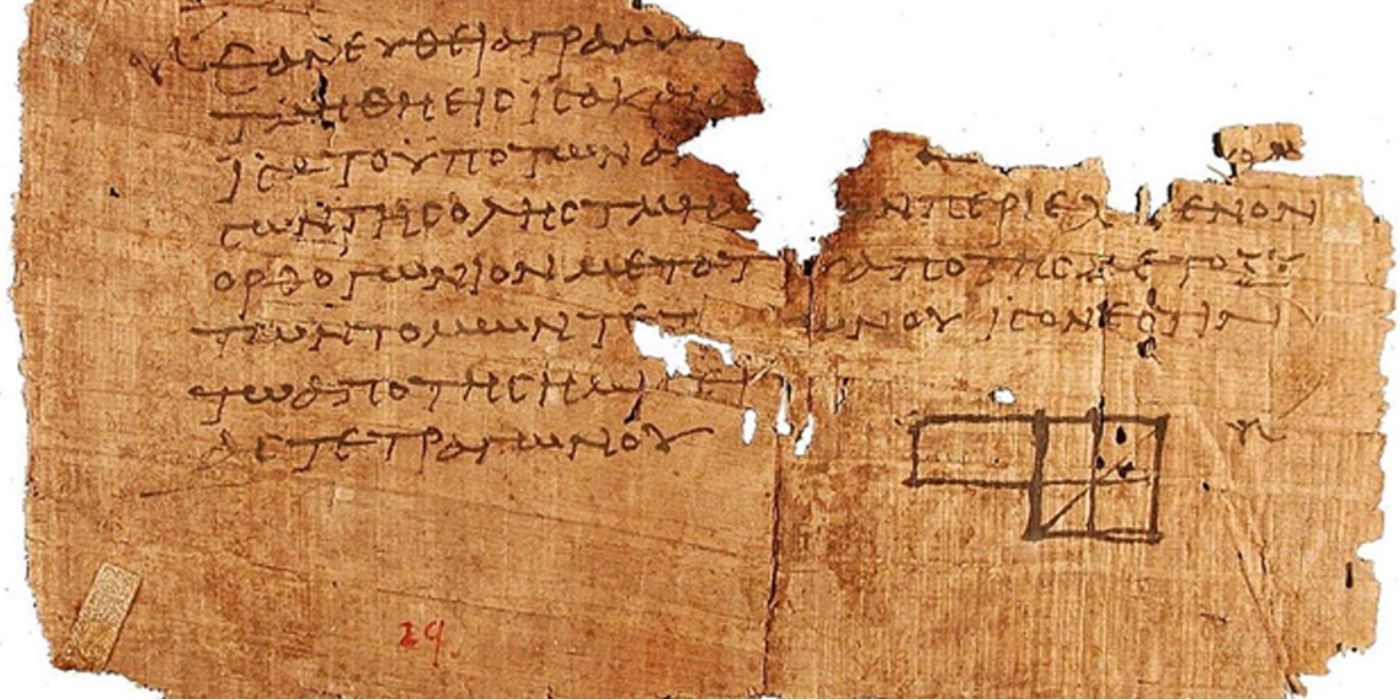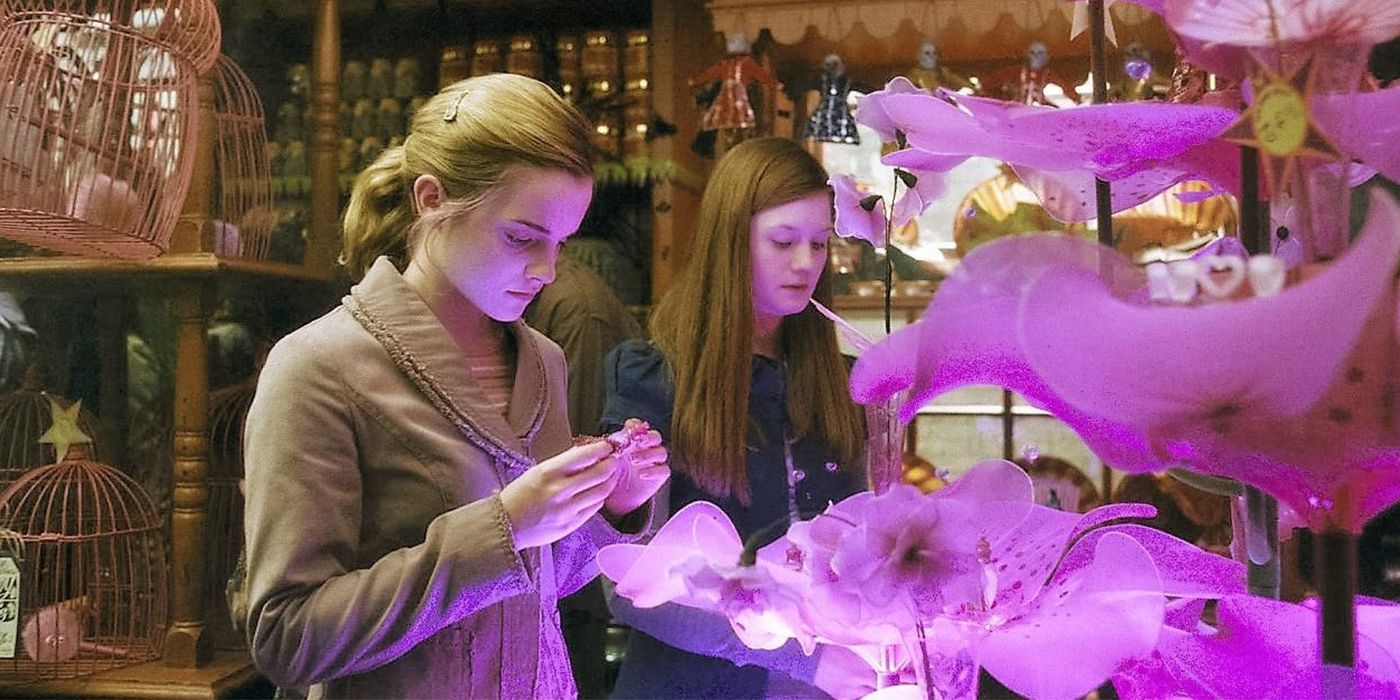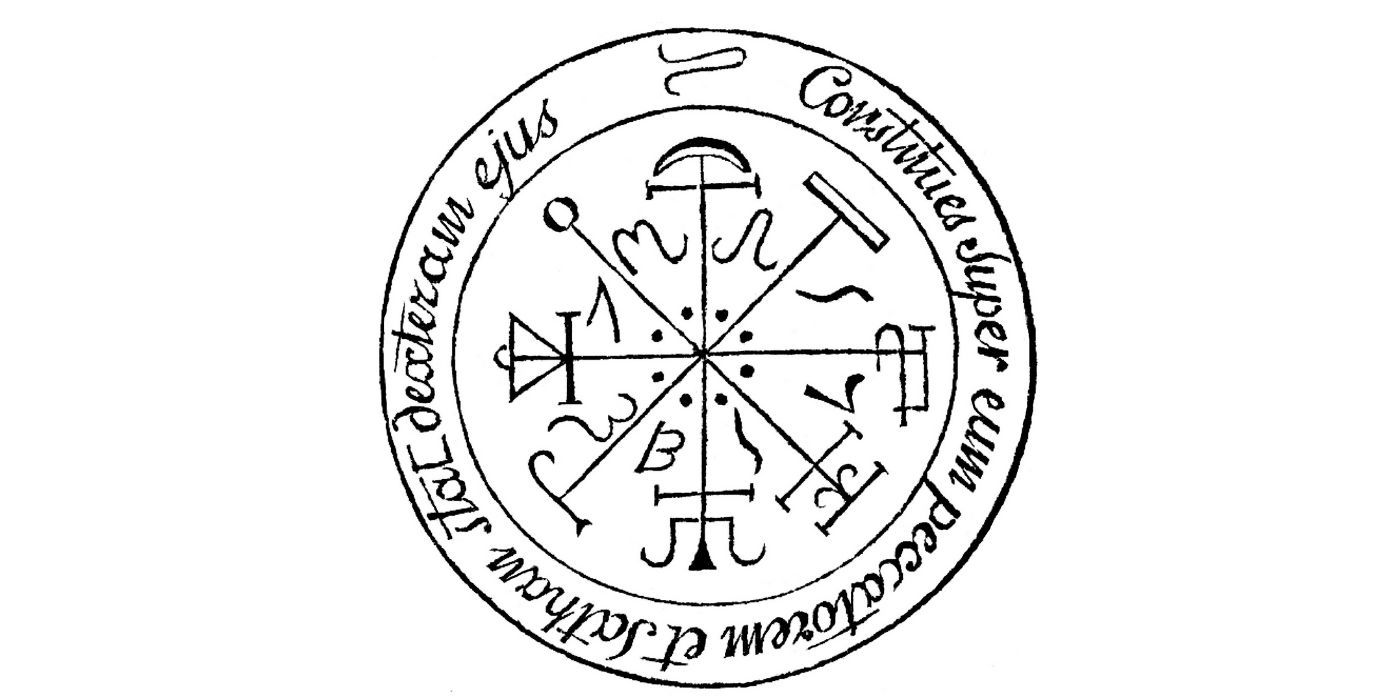You may have heard the news that there are four new ebooks heading our way, courtesy of Pottermore. They're inspired by the Harry Potter museum exhibit – which had several real-life examples of the inspiration for Harry Potter.
The first of the ebooks is Harry Potter: A Journey Through Charms and Defense Against the Dark Arts. And it talks all about some of the real-life events and folklore that J.K. Rowling pulled from to create her hit series.
It's so easy to forget that the charms used in Harry Potter are based on lore that many cultures have believed in and contributed to. Here are some of those examples, as described in the first book in this miniseries.
Abracadabra
Okay, so this is probably the most obvious item on the list. Abracadabra is one of the most commonly referenced magical words. It's sort of become a running joke over time. With everyone jokingly using it in reference to opening a door or doing a simple magic trick.
But Abracadabra is more than just that. In fact, many people believed it was a very powerful word, back in the day. For one thing, it was used during the 17th century in an attempt to ward off the plague. It was also believed to ward off other illnesses, so it was applied in many different manners (charms, scrolls, etc) in hopes of it working. That means that it was an element in many healing and safekeeping charms. Pretty interesting, right?
Shapeshifting
Almost every culture has a reference to a shapeshifter of one kind or another. While none use the term Animagus, you can see clearly see the influence here. An Animagus, as you well know, is a witch or wizard that can transform (or transfigure) into an animal. It isn't easy to become one, however.
And that is true in lore as well. The Ethiopians believed that a person could shift in animals, such as lions or snakes. It required lots of preparation, prayer, and some outside help. But if you were really lucky, it was believed that all of this would result in you being able to shift. This process might sound familiar to those that know about becoming an Animagus. This process requires lots of preparation, some guidance wouldn't hurt, and a lot of time and even some potion making skills. They don't overlap perfectly, but you can still see the connections.
Däbtäras
Däbtäras are Ethiopian practitioners. And they were the ones you had to go to if you wanted help transforming. At least, this particular method of transformation.
The assumption was that you needed to transform into a beast in order to win a battle or war. Which means that the Däbtäras were very important people, and for a number of reasons. The Däbtäras were the only ones that could make the talisman to create the transformation. And they continued to do so even when other religions became more dominant in the area.
Spells & Charms
In Egyptian culture, it was believed that with the proper spells or charms, one could prevent specific events, or help ensure your success. Some of these uses could be considered more benevolent, while others are most assuredly not.
In fact, some of the examples listed inside Harry Potter: A Journey Through Charms and Defense Against the Dark Arts indicate that they would require the user to order demons into helping. So not exactly white magic, by most standards. But considering the time period, it wasn't considered to be abnormal – though still risky.
Egyptian Charm
One of the interesting examples given was an old Egyptian charm. It was seven pages worth of Ancient Greek spells and charms. These charms varied from trying to seek out and prevent thieves, to getting inside the heads of the people around it. Which sort of explains the length of the scroll, right?
Once again, this required the charms to command a demon to do its bidding, which sounds all sorts of risky. Can you imagine trying to teach Luna or Neville to do something like that? Anyway, in order to successfully order a demon, you needed to know its name, and you needed to know the spells required.
Love Charms
Love charms! These are referenced so often, it's almost concerning. Love charms and potions are mentioned and even used in Harry Potter. But they've also been used heavily throughout history (regardless of whether or not you believe they work, the attempt was made).
You could probably find a variant of a love charm in almost every culture out there, and it wouldn't even take that much looking! More often than not, all of the elements in a love charm lead back to cultural connotations towards love. For example, the charm mentioned in this mini-history book is from the Netherlands. It's an oyster shell base, which is considered a symbol of love.
Brooms
No witch is complete without her symbolic broom. So, of course, Harry Potter: A Journey Through Charms and Defense Against the Dark Arts included a section on witches and brooms. This was a fun segment, as it covered a lot of the imagery and history of said imagery.
Brooms are charmed objects, though it's somewhat easy to forget that fact. That's the reason why they made it into this particular ebook. The association of witches and broomsticks was originally a negative one. It was an attempt to subvert and control the narrative about women who behaved outside of the expected norm.
That interpretation changed over time. Though Olga Hunt, in particular, deserves some of the credit for that. She lived during the 1900s and is best known for dressing up her broom with ribbons and hopping around the park. We don't exactly know why she decided to do this, but we give her credit for taking this symbol back and making it something more positive.
The Book of King Solomon called the Key of Knowledge
This ancient manuscript is notable and worthy of being mentioned in this particular history, for one specific charm it included within. We're talking about the spell to make oneself invisible. After all, we're not all so lucky as to inherit an amazing invisibility cloak. And we're totally not jealous about that or anything.
The one major downside to this manuscript? It was so popular, and so widely copied that we can't tell the changes apart from the original. So there are many variants of this spell and the preparations for it. We do know one thing though, the title of this special chapter was 'How experiments to be invisible must be prepared.' We also know that the spell required the caster to pray or otherwise appeal to god; all in hopes of getting the spell to work. There's also the implication that the morality of the caster may come in question. Which is actually a fun correlation to the Deathly Hallows, when you think about it.
Witch Hunting
This may seem like an odd inclusion in this novel, but in a way it makes sense. Witches were hunted because they were feared – even though realistically he'd only be the dark witches and wizards that were a threat. In the world of Harry Potter, that implies that the muggles couldn't tell the difference. Which holds up.
Witches have been an easy way of starting conflict and going after misbehaving women (by society's standard, that is). And it's been done again and again. These moments are blemishes in our history, but that just makes them more important to talk about.
Harry Potter: A Journey Through Charms and Defense Against the Dark Arts covered all of the important (and brutal) moments in regards to witch hunting. From the witch hunt in England (1621) to the Salem Witch Trials, and then some.


